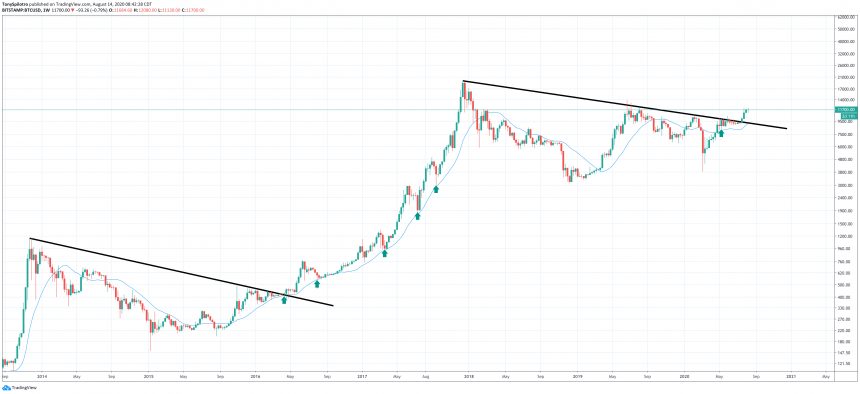Bitcoin has broken out from downtrend resistance and appears to be poised for a new uptrend. Market conditions change dramatically when a switch from bear to bull occurs, and a “buy the dip” strategy is often the most effective.
For investors and traders unsure of how to do that, history shows that one specific level is the best place to buy BTC.
Bitcoin Bull Run Is Here: Time To Buy The Dip, Or Time To HODL?
During the last major crypto bull run, the term “HODL” was coined to reflect how violent each bull market crash was in Bitcoin. Rather than selling Bitcoin, seeking to rebuy the asset lower, the term’s originator recommended investors simply “hold on for dear life,” instead.
Selloffs are especially violent, but present an unrivaled opportunity to double-dip on ROI. During the 2016 and 2017 bull market, Bitcoin had several, over 35% crashes taking place in a matter of weeks to a month.
Related Reading | Economist: Early Days of Bitcoin Uptrend Are Here, Breakout Has A Long Way To Go
Price action and sentiment during these moments would get exceptionally frightening, making buying the dip more difficult in practice than it seems. But those that did manage to buy the dip were always handsomely rewarded for the risk taken.
Looking back over past price action, there could be one important level that acted as an ideal buy zone whenever Bitcoin retracted to touch it. If the same strategy works just as well during the next uptrend, the level could be the key to unlocking untold wealth.

BTCUSD Weekly Price Chart + 20-Week Moving Average | Source: TradingView
20-Week Moving Average Historically Acts As Ideal Buy Zone For Big BTC Profits
Moving averages are visual-based line indicators that are added to price charts, based on statistical open and close data regarding price action. These moving averages can be used to find potential support or resistance and can act as a buy or sell trigger as price passes through it.
The
